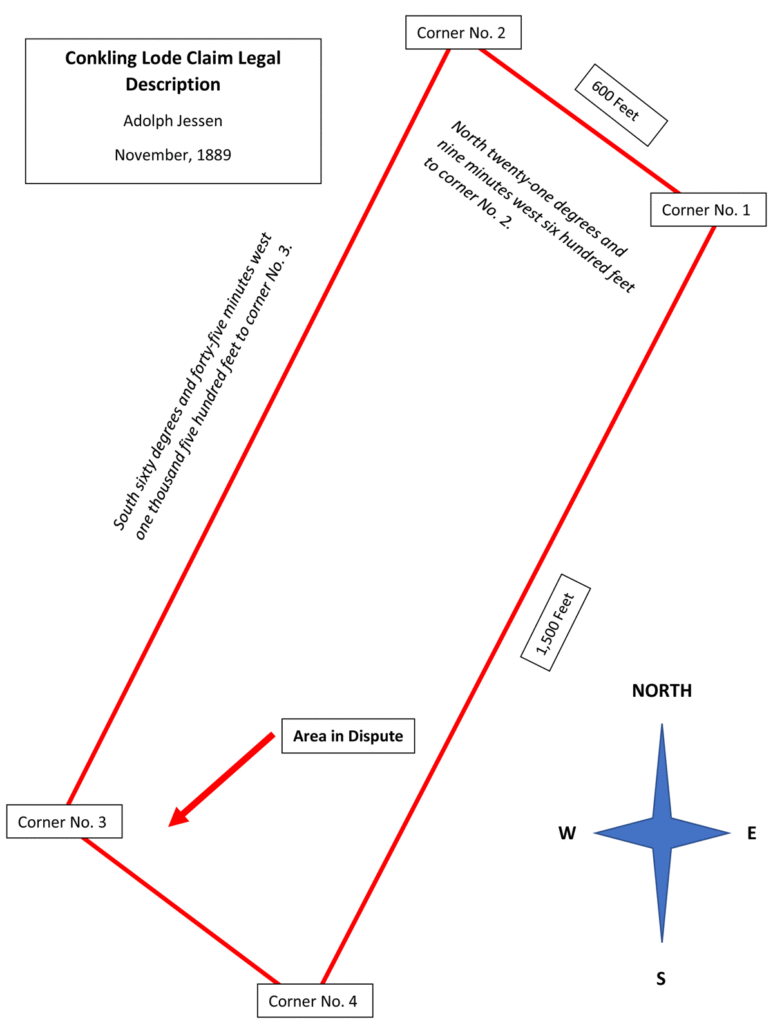This is the eighth article in a series on the Conkling Mining Co. v. Silver King Coalition Mines Co. lawsuit.
It would be four years before the case of the Conkling Mining company against the Silver King Coalition Mines Company began in U. S. District Court before the Honorable Judge John A. Marshall. During that time, lawyers and mining engineers from both sides bickered over how much ore had been extracted from the Elephant stope and how much it was worth. The time was used to solicit expert testimony, depose witnesses, and gather highly technical evidence in the action.
The first witness in the case was heard on January 15, 1912. On this day, Charles H. Gitsch, a veteran miner, and shift boss and foreman for the Crescent Mining Company, testified as to the apex of the Crescent fissure. Court was then recessed until Monday, January 29 when the trial got underway in earnest. Solicitors Edward B. Critchlow and William H. King represented the Conkling Company and William H. Dickson, A. C. Ellis, and Thomas Marioneaux the Silver King Coalition.
The object of this trial was to determine the ownership of a strip of land one hundred and thirty-five and five-tenths (135.5) feet in width off the southwest end of the Conkling claim and the vein situated therein. Counsel from both sides and the Court assented to the stipulation that a decree resolved in favor of the Conkling company would result in an order requiring the Silver King to account for the ores mined beneath the surface of the claim.

Credit: Diagram by Steve Leatham
Counsel for the plaintiff (Conkling Mining Company) then offered in evidence a patent of the United States to the Conkling lode mining claim, U. S. lot No. 689. Counsel for the respective parties then stipulated that the plaintiff owned three-fourths and the defendant owned one-fourth of the mining claim. Thereupon the plaintiff rested its case.
The defense wasted little time in presenting its argument. Long-time Silver King mining engineer Charles P. Brooks took the stand to explain the results of the surveys he had made to show the position of the Conkling claim on the surface. A parade of mining engineers, surveyors, miners, and company officials followed, all swearing that the length of the Jessen survey (mentioned in earlier articles) was indeed short and the ore body found below the surface of the Conkling was part of the Crescent fissure which apexed in the Monroe Doctrine, Cumberland, and Constitution mining claims owned by the Silver King Coalition. Under mining law governing the principle of extralateral rights, the Silver King felt entitled to follow, and mine, the mineral vein that extended at depth beyond the vertical boundaries of those claims.
Evidence being taken and the cause having been argued, the case was submitted to the Court and taken under advisement by Judge Marshall the second week of February 1912. On June 1, the Park Record reported “The question that is agitating the local mining men generally is when will a decision be rendered in the Conkling-King case? It is about time, that’s a certainty.”
Learn more about Park City mining history at the Park City Museum and Its Hal Compton Research Library.